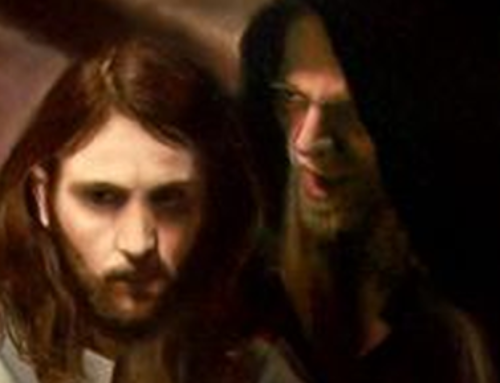The gospels contain many stories of miraculous healings, both by Jesus himself and by the apostles.
But even in the Bible there are also many cases of people who are not healed, like Paul’s famous thorn in the flesh, and the illnesses of Epaphroditus, Timothy and Trophimus.
It is important to realise that in the Bible a miracle never sets a precedent.
It is always a special kind of grace. In Greek the word for miracle is semeion, which means a sign.
It is a sign of the power of God. Miracles can inspire faith and worship.
And we are all encouraged to pray for those who are ill.
Still, there is no guarantee that God will answer such a prayer in the way that we expect.
Anecdote (not part of the original sermon): Philip Yancy once searched for hard evidence of the existence of God, so that he would not have to rely on faith. He then stumbled on one of those mass healing services. “The atmosphere was unbelievably charged–soft organ music in the background; the murmuring sound of people praying aloud, some in strange tongues; and every few minutes a happy interruption when someone would stand and claim, “I’m healed!”” He was particularly impressed by a physician with terminal lung cancer who had been carried into the meeting on a stretcher. He had been given 6 months to live, but now he felt great. He honestly believed God had healed him. He was walking for the 1st time in months. Philip believed his search was over. He had seen proof of a living God in those people on the stage. One week later he tried to contact this physician. A woman answered the phone. After making sure she understood the question, she spoke in a flat voice, pronouncing each word slowly, “My… husband… is… dead”. Then she hung up. Philip was left behind devastated as well.
So why then do we have all these positive stories in the New Testament? Well, as I said, they are at least examples of what God is capable of. But there is more to it. I have found that in each of these stories there are messages which are valid for much larger groups of people. We may not notice them when we are reading only superficially, but we will when we pay careful attention to the words and phrases, try to feel the emotions of the various agents and listen to what the Holy Spirit tries to tell us. This is not so much a matter of being a Hebrew or Greek scholar, although it sometimes helps, but above all of recognising the great themes that Jesus always tries to express.
It is a matter of discovering the patterns and of our willingness to be guided by them, both in our theology and in our daily lives.
Insert (not part of the original sermon): Matthew Henry writes in his Bible commentary that the first lesson we can derive from this story is that we should regularly go to church, even if we have a disability, just like this crippled woman went to the synagogue. However much I respect Bible scholars like Matthew Henry, I believe this interpretation not only distracts from the central message and theme, but actually collides with it. There is no evidence that this woman was a regular. It is more likely that she came specifically to hear and to see Jesus. By now his reputation had spread. This was probably even the last time Jesus was admitted into a synagogue. As this story shows, he was facing increasing opposition. Ironically, whoever over-emphasizes the in itself valid rule about attending church, becomes guilty of the same legalism that was displayed by the head of the synagogue in this story. His main concern was that they neatly followed what was generally deemed appropriate and necessary for salvation. And he cared less about the woman herself and about Jesus.
The story of the healing of the crippled woman unfolds in 4 phases.
- First we have Jesus, who is teaching in the synagogue.
And as he is teaching, which might still be considered as theory, just a sequence of words, there appears this woman, as out of the blue, posing a very practical problem.
When we think about it, isn’t it the same with any story in the Bible? We can regard it as dry dogma, as theory, as theology, but on closer inspection, once we learn to view people somewhat like Jesus did, we will find, in the middle of all those words, that it is really about human suffering and about God’s answer to that suffering. Nothing else, really.
So this first phase is about noticing what really matters. Jesus interrupts his teaching for it, or should I say, he is able to make a stronger point by anchoring his message in the real world. Real world problems do not present themselves to us without a reason. They ask for our engagement. Now Jesus did not heal everyone, but you cannot say He was not engaged. - The second stage was to call her over. People sometimes need a little encouragement to come closer, to open themselves up. We do not know how Jesus did this. There is no parallel text in the other gospels which could shed more light on what happened. But we can be sure it was gentle and respectful, not commanding, but inviting.
However, the woman was still crippled, so it took her some time to advance.
This would have been a lesson in itself for the other visitors, an exercise in patience.
For they could only watch and wait while this woman was crawling forward. Good for them!
A live illustration that people need time and space, and that needing more time or space does not make us in any way inferior. - The next thing Jesus does is to tell her that she is set free from her ailment.
Just answering Jesus’ call did that. Or it could mean that the spirit which had crippled her, never had any real power over her. She was free even before Jesus had touched her. - And then the fourth and final phase is when Jesus touches her, and it gives her the courage and the strength to actually stand up, to reach full equality. Because in the eyes of many the slightest imperfection could mean you didn’t count, you were a failure, you were avoided.
Unfortunately that is often still the case in our society. Jesus wants to correct this.
At the time the gospels were written, people believed that many illnesses were caused by demons.
But then we are usually talking about illnesses like epilepsy or craziness or aggression.
Here we have an ailment which even in those days could have been attributed to a broken hip.
Still, our texts speaks of a spirit and of Satan. So is this a healing or an exorcism?
I tend to disagree with those who make a sharp distinction between these two.
Again, what matters here is the human suffering and the solution which Jesus provides.
And his concern seems to be especially with suffering which originates in the mind.
Today we are only just discovering the great influence of the mind on everything else.
Our thoughts and feelings can make or break us. Stress and feelings of inferiority can literally cripple us. They can prevent us from standing straight, facing challenges, achieving goals, from fully living.
You may have noticed that the number 18 is mentioned twice in this story.
In the Bible the number 18 is a symbol of slavery. After taking possession of the promised land, but before Saul was made king, the children of Israel were oppressed by the Moabites, the Philistines and the Ammonites, for 18 years (Judges 3:12,14; 10:7,8). Also the word for slavery is mentioned 18 times in scripture. When God leads his people out of the slavery of Egypt, He immediately warns them not to worship other Gods. But apparently it is possible to have received the promised land or the Kingdom of God and yet to fall back into some kind of slavery.
That’s why Paul in 1 Corinthians says that all things are lawful for him, but he resolves not to be enslaved by anything. And in Gal. 5:1 (NLT) he says, “So Christ has truly set us free. Now make sure that you stay free, and don’t get tied up again in slavery to the law.”
We can of course be enslaved by all sorts of things. The most subtle form of enslavement is probably to worship various religious objects, customs and ideas. Limited images of God, specific leaders or the law itself, which is only a tool, not something that will ever save or cure us.
When these things become an end in themselves, they will cripple us and stifle further growth.
We may need to walk away, but even that becomes more and more difficult.
Now for the Jews, the Sabbath was a symbol of the whole law. By healing on the Sabbath day, Jesus made it clear that the Sabbath was just that, a symbol. Elsewhere he called himself Lord of the Sabbath. Symbols can be useful, but definitely not when they become the object of our worship.
It is interesting that in his answer to the head of the synagogue, Jesus calls the woman a daughter of Abraham. He was taking his audience back to a time when the Sabbath was not yet observed. The people of Israel only learnt about it when they were wandering in the desert. Then it became a sign of Gods covenant with Israel when it was included in the 10 commandments as given on Sinai. Abraham, however, was God’s friend without ever observing the Sabbath.
And Christ underlined his own authority by saying, “before Abraham was, I am” (John 8:58).
It all points to the fact that there are things which are more fundamental than the law and the external side of religion. “So the law has been our tutor up to Christ” (Gal. 3:24; Darby) but now Christ needs to take over in our lives. Since then, the emphasis had to be on the heart.
So what had been meant as a sign of rest, of liberation from the forced labour in Egypt, had quickly turned into a kind of fetish without much to say about the theme of liberation.
It was made into a condition for Gods mercy, made even harder by adding additional customs and rules. “Woe to you, teachers of the law and Pharisees, you hypocrites! You shut the door of the kingdom of heaven in people’s faces. You yourselves do not enter, nor will you let those enter who are trying to” (Mt. 23:13). So let us be careful that the same does not happen to our Sunday observance! Or to any other favourite custom of ours.
What, then, do we need to keep us away from this external religion which can easily keep us trapped for 18 years or so, whether it is by becoming stuck in it, or by becoming disillusioned and downcast? Maybe our other reading, from the book of Hebrews, can help us to answer that question.
It says we have not come to something we can touch, to impressive sounds or severe words.
Neither have we come to an earthly temple, a tangible mount Zion or an earthly holy city.
We have come to the city of the living God, the heavenly Jerusalem and to the assembly of the firstborn. So all true religion is about things that are intangible. Everything else is idolatry.
Two things are worth noticing here. First, we have already come to the heavenly Jerusalem.
It is not some distant future. Secondly, before the privilege of priesthood was transferred to the descendants of Aaron (after the sin with the golden calf), the firstborn of every Jewish family was intended to serve as a priest in the temple. Now we know that Christ by his death and resurrection undid all the consequences of sin! And this is one of them. Christ not only restored this privilege to each family, but he went further than that. He opened the way for all his followers to join this assembly of the firstborn. Through our baptism we have already “come to” the assembly of priests!
And this brings us back to the story of the crippled woman and to the story of our life.
If we want, we can remain slaves to human inventions and prejudices. In the words of the hymn “there’s a wideness in God’s mercy” we can “magnify His strictness with a zeal He will not own”.
OR we can answer Jesus’s call, walk up to Him and hear him say, “Friend, you are set free from your ailment”. “Please stand up and act as if you are receiving a kingdom that cannot be shaken, because, well, you are receiving it”. “Do not remain chained by the false assumption that you are nothing compared to this head of a synagogue, a leader of the church or a theologian. Perhaps your role could be even greater”.
By the way, Martin Luther, the Reformer, had an interesting definition of a theologian. He said you don’t become a theologian by reading, reasoning and speculating. He believed it was by living and dying with Christ. The knowledge of God belongs to every Christian. We do not need to be intimidated by anything resembling arrogance, idolatry or secrecy. We should not be satisfied to be expendable pawns in someone’s power games, only welcome as long as we are obedient consumers.
We have so much more to offer than our money and our membership.
We are God’s people. Each of us can make a change, young and old, healthy or disabled.
St. Luke tells us that the woman, after standing up, praised God. She was physically healed, but perhaps more importantly, her dignity and confidence had been restored. A new creation.
And the crowd was also rejoicing at all the wonderful things Jesus was doing. That is what I pray will happen in our lives as well. We have already been set free. We have come to the assembly of the firstborn, a kingdom of priests. May Christ then also touch us and give us strength to take our place there and stand up for what is right.
Amen.




Leave A Comment